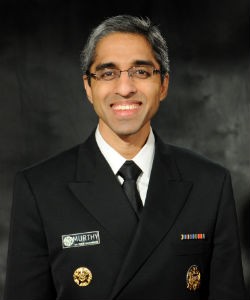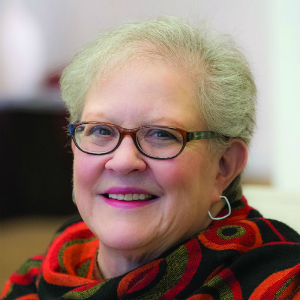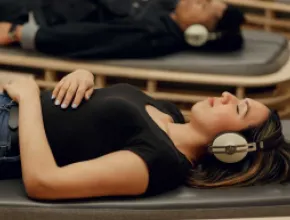In my blog post titled "Can Meetings Help Alleviate a Major Healthcare Epidemic?"—included alongside this article in the November 2017 edition of the Friday With Joan newsletter—I noted the research the MPI Foundation did in the ’90s about why people attend corporate and association meetings (to network) and provided input from a colleague about her experiences as a “first-timer” at a major industry event.
After observing and participating in social media group discussions with those in the broader hospitality industry, it was evident that many people feel a sense of loneliness at meetings, even the ones they aren’t attending for the first time.
In my Friday With Joan blog post I referenced an article in the Harvard Business Review titled "Work and the Loneliness Epidemic," written by Dr. Vivek H. Murthy. As I read what Dr. Murthy wrote on the topic of loneliness and this Washington Post article in which he was interviewed, I reflected on the experiences I’ve had in more than 40 years of attending and planning meetings and events in the hospitality industry and elsewhere.
Perhaps loneliness at meetings is more visible now because people’s noses are stuck in electronic devices. Yet even before we were using those, if we paid attention, we could see that there were many people who were excluded from conversations and no doubt lonely even in the midst of hundreds or thousands.
When Dr. Murthy wrote about “Inside Scoop," the tool created while serving as surgeon general that allowed staff members to share something about themselves in pictures for five minutes at weekly staff meetings, I thought of the improvisation tool that Izzy Gesell* taught at an International Association of Facilitators meeting that I use to this day because it allows people at meetings or those who work together but don’t really know each other to connect on a different level. Some might call these “ice breakers”; I prefer to think of them as improvisation exercises because “ice breaker” makes most people uncomfortable! Izzy taught “Three things in common, one uniqueness.” It attempts to accomplish some of the same goals as “Inside Scoop” in a shorter time (three minutes, during a conference), and can be used even with thousands split into smaller groups.
Harrison Owen, in his then groundbreaking work in the ’80s, coined the term Open Space Technology to define a technique or tool for people to discuss, in a manner that is not a traditional conference model, ways to solve the issues with which they are grappling. He coined it after watching people connect at breaks, in lines, at meals in the days before our noses were in our electronic devices. Back when we were "forced" to have real conversations.
In his HBR cover article, Dr. Murthy wrote: "Strong social connections are characterized by meaningful shared experiences and mutually beneficial two-way relationships, where both individuals give and receive ... Make strengthening social connections a strategic priority in your organization. Designing and modeling a culture that supports connection is more important than any single program. It will require buy-in and engagement from all levels of the organization, particularly leadership. Having senior members of an organization invest in building strong connections with other team members can set a powerful example, especially when leaders are willing to demonstrate that vulnerability can be a source of strength, not weakness. Ask yourself if the current culture and policies in your institution support the development of trusted relationships.”
As I read this, the opportunity at meetings seemed so obvious—for associations, corporations, and for all kinds of groups of affiliated and non-affiliated individuals who come together. It’s why I thought that we in the hospitality industry could contribute to helping alleviate what I agree is a public health crisis of loneliness.
The Meetings Today editors and I thank Dr. Murthy for his time to respond to these questions. I think his message is critical and I hope our industry and yours will include his writing and thinking in your planning meetings. Maybe some of you will even include him at your conferences as a speaker. His message is needed in a world where individuals are more isolated. But before we get into the questions, here's some background!
Vivek H. Murthy, MD, MBA, served as the 19th surgeon general of the United States from 2014 to 2017. As the vice admiral of the U.S. Public Health Service Commissioned Corps, he commanded a uniformed service of 6,600 public health officers globally. During his tenure, Dr. Murthy launched the TurnTheTide campaign, catalyzing a movement among health professionals to address the nation’s opioid crisis.
He also issued the first Surgeon General’s Report on Alcohol, Drugs, and Health, calling for expanded access to prevention and treatment and for recognizing addiction as a chronic illness, not a character flaw.
An internal medicine physician and entrepreneur, Dr. Murthy has co-founded a number of organizations: VISIONS, an HIV/AIDS education program in India; Swasthya, a community health partnership in rural India training women as health providers and educators; software company TrialNetworks; and Doctors for America.
You can read more from Dr. Murthy on his blog and you can contact him here.
Q1. How can we better build those connections and feel valued at a conference where there may be anywhere from 50 to 35,000 or more people?
Dr. Murthy responds: Shared experiences are strong foundations for connection. The more engaging and emotive the experience, the stronger the connection. This means having speakers who can engage an audience cerebrally and emotionally. It means creating an environment that emphasizes the sense of mission and shared purpose that brings people together. And it also means creating opportunities for attendees to learn about each other and engage with each other authentically and face to face.
Q2. I’m guessing you’ve been part of a conference, either as a participant or speaker, where “first-timers” are often singled out by the ribbons they are asked to wear and the events to which they are invited to “learn how to participate” in the conference.
- What are better ways to integrate those attending a conference for the first time?
- How can individual presenters help people connect through the breakout or even general sessions at which they speak?
Dr. Murthy responds: Being known authentically for who you are—your values, aspirations, life roles and experiences—is an important ingredient in building connection with another. Giving first-time conference attendees a comfortable space to share while also learning the same about other attendees can help build meaningful bonds in a short period of time.
Q3. Much has been said by author and speaker, Susan Cain (“Quiet: The Power of Introversion”) about the needs of Introverts both in the workplace and at conferences. Looking at loneliness as a serious problem with what Cain says about the need for Introverts (among whom I number) to “vant to be alone” to have quiet time, their time, to think and work without others, how do we, who develop and facilitate and host conferences and conventions, create a balance of connectivity to avoid loneliness and enough time alone to help “I”s recharge and use time to help Introverts when every hour is programmed?
Dr. Murthy responds: Conferences can create places where it is safe and acceptable to be quiet with one's thoughts. This could be a designated quiet table during meal times or natural spaces where people walk or sit in silence. Currently, the expectation in most conference spaces is that people should interact with each other. Taking space for yourself can feel anti-social in such settings which is problematic for all of us who may need some time alone to think or simply to be.
Q4. Lastly, meetings—conferences, seminars, conventions—are a major part of what we all do. It is a time when we have opportunities to make connections and yet, often we never follow-up and we end up bringing that loneliness back with us. How can those who design and host these events—before, during and after—help those who need to deepen connections to move loneliness to more connectedness?
Dr. Murthy responds: Providing an easy way to locate fellow attendees’ contact information post-conference can be immensely helpful as an alternative to searching for misplaced business cards. (This would of course need to be done with the consent of attendees.) Additionally, in the days and weeks that follow a conference, organizers can share stories of connections made at the conferences to remind attendees of the people they met and inspire them to reach out and continue conversations. Creating a private Facebook or LinkedIn group for attendees can also provide a low-friction channel through which to share experiences after the conference.
*The mention of Izzy Gesell's improvisation tool is a preview of coming attractions: watch for the Dec. 1, 2017, edition of Friday With Joan for more on how improvisation is a great tool for planning, sales, marketing and, well, life!
Click here to view additional content in the 11.03.17 Friday With Joan newsletter.







